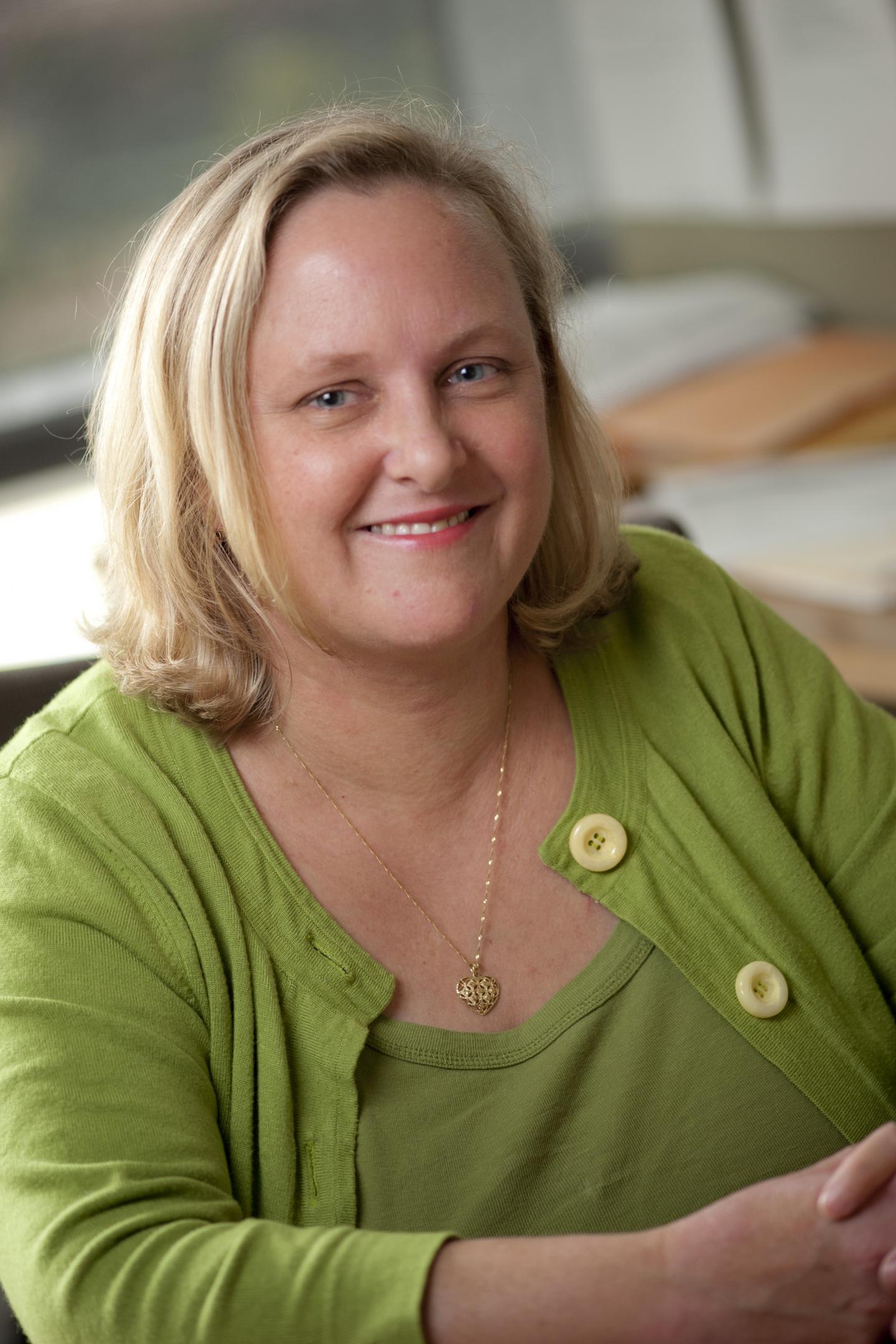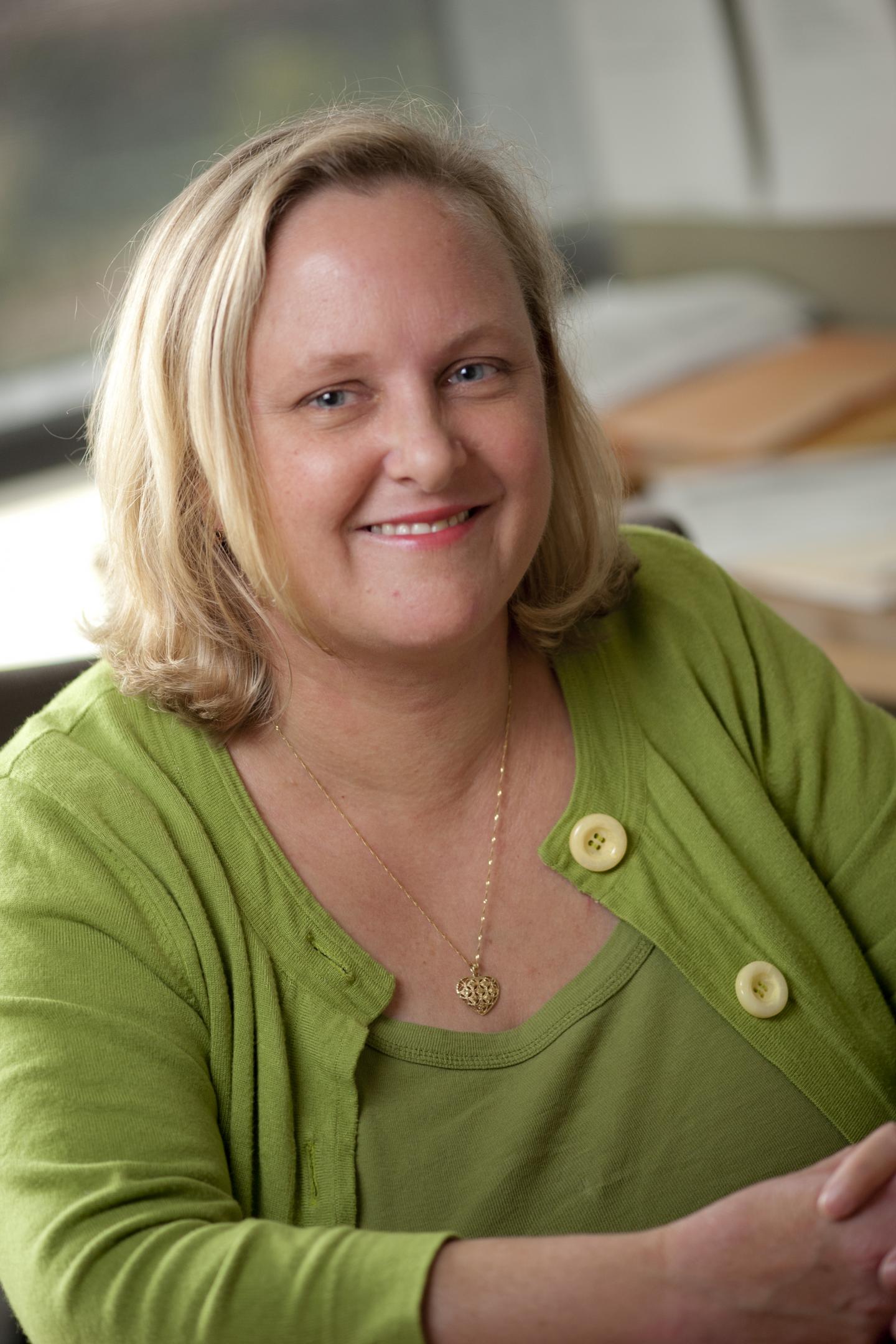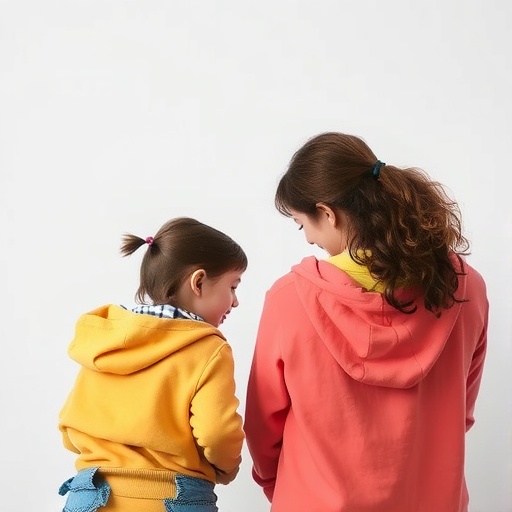
Credit: Jeff Fitlow/Rice University
Scientists at Rice University, Texas Children's Hospital and Baylor College of Medicine have won a prestigious National Institutes of Health grant to study the dynamic processes and cellular players linked to discrete subaortic stenosis (DSS), a congenital heart disease.
The $2.2 million, four-year R01 grant administered by the National Heart, Lung and Blood Institute will allow a team led by Jane Grande-Allen and Dr. Sundeep Keswani to develop computer and tissue-engineered models to predict the recurrence of DSS lesions of the left ventricular outflow tract (LVOT).
Grande-Allen is Rice's Isabel C. Cameron Professor of Bioengineering and chair of the university's Department of Bioengineering. Keswani is a surgeon and director of surgical research at Texas Children's and an associate professor in the Michael E. DeBakey Department of Surgery at Baylor.
In normal hearts, blood passes through the tract from the left ventricle to the aorta. In patients with DSS, a fibrous tissue membrane forms and prevents blood flow from leaving the heart. Heart surgery is the only current option to manage the disease, but up to 30 percent of patients have an aggressive form of DSS in which the membrane recurs, and these patients may have to undergo further cardiothoracic surgery.
The researchers believe a better understanding of how the fibrous membranes form will help doctors manage the disease. "Understanding the mechanisms of how altered shear forces induce fibrosis in the LVOT is a major gap in our knowledge," Grande-Allen said. "If we can predict recurrence of DSS lesions of this outflow tract, we can change the way the disease is managed and really improve the quality of life for these children."
Working with co-investigator Philippe Sucosky of Wright State University, the research team has developed preliminary computational fluid dynamic models that mimic the complex shear forces and the altered geometry of the tract observed in DSS. The models will help the researchers develop a physical bioreactor to investigate interactions between the major cellular players in DSS: the endocardial endothelial cells that are exposed to shear forces, the cardiac fibroblasts that facilitate fibrosis and the circulating immune cells.
"We have found some striking differences between patients who have the aggressive form of the disease and those who do not," Keswani said. "These findings will give insight into the mechanism of how this membrane forms and perhaps why some humans have a more pro-fibrotic phenotype.
"This project is the just the beginning of understanding how different kinds of biomechanical forces interact with cells in the LVOT to produce fibrosis," he said.
Preliminary computer model data suggested that altered internal geometries in children's hearts generate turbulence in the flow of blood. That affects the shear forces in the LVOT that in turn trigger an inflammatory response by endothelial cells and encourage the formation of fibrous tissue.
In the future, Grande-Allen and Keswani expect their work will help prevent fibrotic lesions by identifying targets in advance. That ability could also help treat other fibrotic cardiovascular diseases associated with altered flow.
Keswani said Texas Children's, which U.S. News & World Report ranked No. 1 in the nation this week for pediatric cardiology and heart surgery, is uniquely suited to take on the project. "This world-class facility and tremendous volume have driven this project from the bedside to the bench, and this award will hopefully allow us to return to the bedside armed with new tools to help these patients," he said.
"This collaboration is the perfect weave between bioengineering and surgery," Keswani said. "Bioengineers bring a unique way of approaching surgical challenges and surgeons bring the surgical insight and the science, resulting in a synergistic relationship. In addition, it has been absolutely essential to the success of this project to have the support of our surgical leadership, who are strong advocates for surgical research as a means to develop innovative care for patients."
Grande-Allen's Integrative Matrix Mechanics Laboratory specializes in studying the composition and behavior of biological tissues, with a particular interest in heart valves. Keswani is the principal investigator for Texas Children's Laboratory for Regenerative Tissue Repair and a pediatric and fetal surgeon. His laboratory investigates the interaction of inflammation and the extracellular matrix that drives fibrosis with the goal of developing anti-fibrotic, regenerative therapies.
The project also received support from the Virginia and L.E. Simmons Family Foundation Mini-Collaborative Research Fund and a gift from Lew and Laura Moorman.
###
Related materials:
Heart valves strive to get oxygen one way or another: http://news.rice.edu/2016/12/20/heart-valves-strive-to-get-oxygen-one-way-or-another/
Integrative Matrix Mechanics Laboratory (Grande-Allen): http://grandegroup.blogs.rice.edu
Sundeep Keswani bio: https://www.texaschildrens.org/find-a-doctor/sundeep-g-keswani-md
George R. Brown School of Engineering: https://engineering.rice.edu
Texas Children's Hospital: https://www.texaschildrens.org
Baylor College of Medicine: https://www.bcm.edu
Located on a 300-acre forested campus in Houston, Rice University is consistently ranked among the nation's top 20 universities by U.S. News & World Report. Rice has highly respected schools of Architecture, Business, Continuing Studies, Engineering, Humanities, Music, Natural Sciences and Social Sciences and is home to the Baker Institute for Public Policy. With 3,970 undergraduates and 2,934 graduate students, Rice's undergraduate student-to-faculty ratio is just under 6-to-1. Its residential college system builds close-knit communities and lifelong friendships, just one reason why Rice is ranked No. 1 for quality of life and for lots of race/class interaction and No. 2 for happiest students by the Princeton Review. Rice is also rated as a best value among private universities by Kiplinger's Personal Finance. To read "What they're saying about Rice," go to http://tinyurl.com/RiceUniversityoverview.
Texas Children's Hospital, a not-for-profit health care organization, is committed to creating a healthier future for children and women throughout the global community by leading in patient care, education and research. Consistently ranked as the best children's hospital in Texas, and among the top in the nation, Texas Children's has garnered widespread recognition for its expertise and breakthroughs in pediatric and women's health. The hospital includes the Jan and Dan Duncan Neurological Research Institute; the Feigin Tower for pediatric research; Texas Children's Pavilion for Women, a comprehensive obstetrics/gynecology facility focusing on high-risk births; Texas Children's Hospital West Campus, a community hospital in suburban West Houston; and Texas Children's Hospital The Woodlands, the first hospital devoted to children's care for communities north of Houston. The organization also created Texas Children's Health Plan, the nation's first HMO for children; Texas Children's Pediatrics, the largest pediatric primary care network in the country; Texas Children's Urgent Care clinics that specialize in after-hours care tailored specifically for children; and a global health program that's channeling care to children and women all over the world. Texas Children's Hospital is affiliated with Baylor College of Medicine. For more information, go to http://www.texaschildrens.org. Get the latest news by visiting the online newsroom and Twitter at twitter.com/texaschildrens.
Baylor College of Medicine (http://www.bcm.edu) in Houston is recognized as a premier academic health sciences center and is known for excellence in education, research and patient care. It is the only private medical school in the greater southwest and is ranked 16th among medical schools for research and 5th for primary care by U.S. News & World Report. Baylor is listed 21st among all U.S. medical schools for National Institutes of Health funding and number one in Texas. Located in the Texas Medical Center, Baylor has affiliations with seven teaching hospitals and jointly owns and operates Baylor St. Luke's Medical Center, part of CHI St. Luke's Health. Currently, Baylor trains more than 3,000 medical, graduate, nurse anesthesia, physician assistant and orthotics students, as well as residents and post-doctoral fellows. Follow Baylor College of Medicine on Facebook (http://www.facebook.com/BaylorCollegeOfMedicine) and Twitter (http://twitter.com/BCMHouston).
Media Contact
David Ruth
[email protected]
713-348-6327
@RiceUNews
http://news.rice.edu





